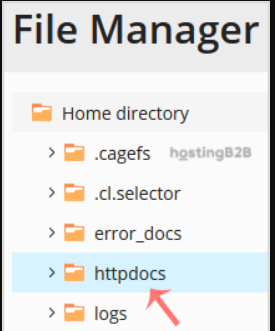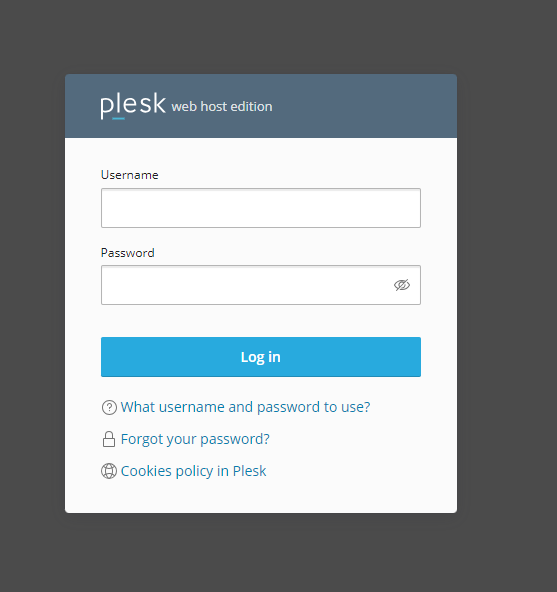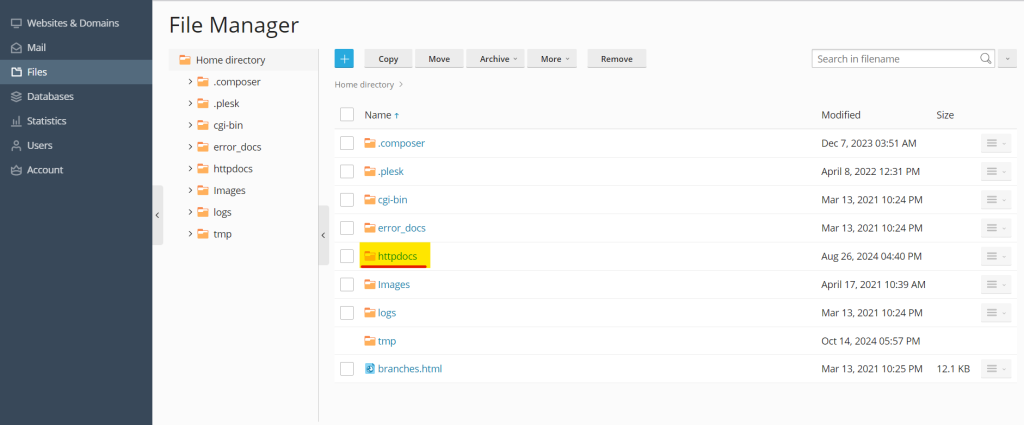
The httpdocs directory is a fundamental component of the Plesk control panel, and it plays a crucial role in managing websites hosted on a Plesk server. Whether you’re a webmaster, developer, or system administrator, understanding the purpose and importance of this directory is essential for maintaining a well-functioning website. In this blog post, we’ll dive deep into the significance of the httpdocs directory and why it is important when using Plesk for web hosting.
Table of Contents
What is the httpdocs Directory?

In Plesk,it is the main folder where the web files of a domain are stored. When you set up a website through Plesk, this is the default directory where HTML files, CSS, JavaScript, and other assets are uploaded and served to visitors. Essentially, it’s the public folder that houses your website content, and any files placed here are accessible via the web.
For example, if your domain is www.example.com, any file you place in the httpdocs directory (e.g., index.html) will be available at www.example.com/index.html.
Why Is the httpdocs Directory Important?

The httpdocs directory serves several key purposes that are vital for the operation of your website. Here’s why this directory is essential:
1. Default Root for Web Content
The httpdocs folder is the web root directory for all content associated with a particular domain. When a user accesses your website, the server automatically serves files from this folder. Without it, your website wouldn’t be accessible via the internet.
2. Separation of Public and Private Files
Plesk provides both the httpdocs and private directories for each domain. While httpdocs is meant for public-facing files, the private directory is used for sensitive data that should not be accessible via the web. This separation ensures that private files (such as configuration files or backups) are not publicly exposed. Keeping your web content in httpdocs makes sure only the intended files are accessible to visitors.
3. Organized File Management
It helps in keeping the website’s file structure organized. By default, all files and directories related to your website’s frontend are stored here, allowing easy access and management. Developers and administrators can quickly locate and update website assets such as HTML pages, images, and scripts without having to sift through irrelevant system or configuration files.
4. Handling Multiple Domains and Subdomains
Plesk allows hosting multiple domains and subdomains under one account, and each of these domains will have its own httpdocs directory. For example, subdomain.example.com will have its own separate httpdocs folder to store its content. This structure ensures that different domains and subdomains remain independent of one another, preventing conflicts and making it easier to manage multiple websites from a single control panel.
5. Supports Secure Hosting
When serving websites over HTTPS, it is also integral to ensuring that the correct files are delivered securely. By placing your website’s files in this directory and enabling SSL certificates through Plesk, you can ensure that visitors can access your site securely via HTTPS. This is critical for protecting user data and maintaining trust.
6. Consistent Deployment
For developers, deploying new versions of a website or updating existing content is a breeze when using Plesk. By knowing that all web files are housed in the httpdocs directory, developers can streamline their deployment processes, ensuring consistency. Whether you’re pushing files via FTP, using Git, or other deployment methods, the target location for web content always remains the same—httpdocs.
7. Easy Backup and Restore
When you back up a domain in Plesk, the contents of the httpdocs directory are included. This makes it easy to back up your website content and restore it if something goes wrong. By keeping your website files organized within this directory, you can ensure that backups are complete and easy to manage.
How to Use the httpdocs Directory
Using the httpdocs directory in Plesk is straightforward. Here’s how to get started:
1. Accessing the httpdocs Directory

- Log in to your Plesk control panel.
- Navigate to Websites & Domains.
- Select the domain for which you want to manage files.
- Click File Manager.
- Inside the File Manager, you’ll find the httpdocs directory. This is where you’ll upload your web files.

2. Uploading Files to httpdocs
You can upload files to httpdocs using two main methods:
- Via File Manager: Plesk’s built-in file manager allows you to upload files directly from your browser. Simply click on the Upload button and select the files you want to add to the httpdocs directory.
- Via FTP/SFTP: You can also use an FTP client like FileZilla to upload files to the httpdocs directory. To do this, use your FTP credentials to log in, navigate to the httpdocs directory, and upload your files.
3. Managing Permissions
Ensure that the files in the httpdocs directory have the correct permissions. Files that need to be executed, such as PHP scripts, should have appropriate read and execute permissions, while sensitive files should have restricted access.
Best Practices for Using the httpdocs Directory
To ensure the smooth operation and security of your website, follow these best practices when using the httpdocs directory:
1. Keep the Directory Clean
Avoid cluttering the httpdocs directory with unnecessary or outdated files. Regularly clean up unused files to keep the directory organized and improve website performance.
2. Secure Sensitive Files
Never store sensitive files such as configuration files, backups, or database dumps in the httpdocs directory. Use Plesk’s private directory or another secure location for such files.
3. Use Subdirectories for Complex Sites
For larger websites with multiple sections or functionalities, create subdirectories within the httpdocs folder to keep related files together. For example, you can create an /images directory for all images or a /scripts directory for JavaScript files.
4. Enable SSL
Always enable SSL for domains that are hosted in the httpdocs directory. You can do this through the SSL/TLS option in Plesk to ensure your site is secure and accessible via HTTPS.
Conclusion
The httpdocs directory in Plesk is a vital component for managing your website’s files. It is the public-facing folder where all your website’s files are stored, allowing them to be accessible via the internet. By keeping your website files organized within this directory, you can easily manage your website’s content, ensure smooth deployments, and maintain secure file structures.
Understanding the purpose and proper usage of the httpdocs directory is essential for anyone managing a website through Plesk. By following best practices and utilizing Plesk’s tools effectively, you can ensure your website operates efficiently and securely.





